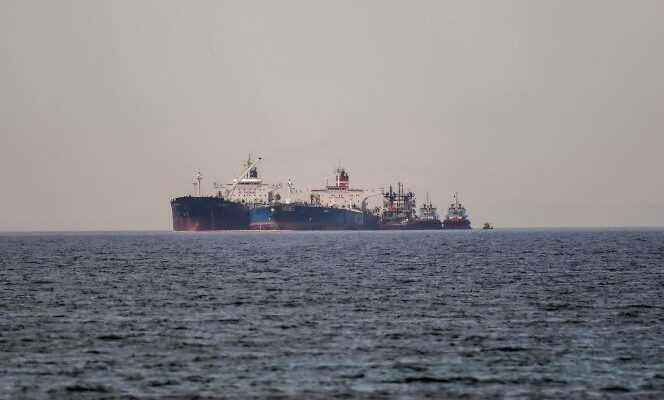Estrange rendezvous in the middle of the North Atlantic. On May 26, 300 miles from the small island of Madeira, the Aframax-class supertanker Zen-1flying the flag of Palau, is approaching her big brother, the Lauren-II, a monster 300 meters long, capable of containing more than 300,000 tonnes of oil in its holds. the Zen-1 empties its contents, nearly 100,000 tonnes of crude from the Russian Urals, and leaves. the Lauren-II waiting, off the African coast, probably another shipment of the same order. Such transhipments in the open sea are not common, assures the Bloomberg agency, which tracks the movements of these giants of the seas. But neither are current events.
Oil tankers, which transport 60% of the oil produced in the world, are key players in the black gold trade and its geopolitics. Since Europe has decided to gradually cut its imports of Russian crude, the country has been trying to redirect its exports at full speed towards greedy and less fussy countries such as China and India. But the maritime exit points for Russian oil are located either to the north, in the Baltic Sea and that of Barents, in the Siberian Arctic, or on the side of the Black Sea, the main outlet for the historical production zone in the Urals. and the Caspian.
Underinvestment
The main destination of Russian oil until now has been Europe. And more than two-thirds of exports travel by sea. By deciding to cut Russian oil imports by ship by the end of the year, the European Union will deprive Moscow of nine-tenths of its nearest market. It will only be left with pipeline supplies from Hungary, the Czech Republic and Slovakia. Hence the need to launch its boats on other oceans, sometimes at the cost of naval acrobatics, such as that practiced off Madeira.
Russia is therefore not benefiting for the moment from the rise in prices, while it still does not manage to produce the quantity authorized by OPEC.
Fortunately for Russia, India is still thirsty and has smelled a windfall. It is rapidly converting its refineries to accommodate oil from the Urals and its imports are constantly rising: +20% in April and twice as much in May. But if she is so welcoming, it is also because she makes her price. To sell its merchandise, Moscow is selling off. As a result, its overall production is up, but its revenues down, by 5% at the end of May, according to Bloomberg.
You have 27.63% of this article left to read. The following is for subscribers only.
